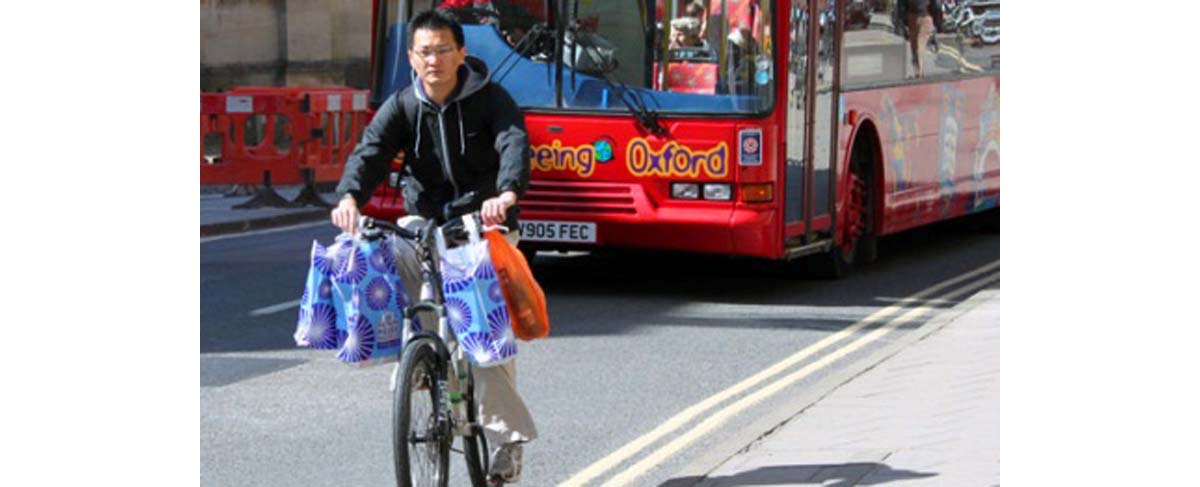Cycling is a good way to train your endurance, it makes a great workout for your back and legs, and it also offers an effective aerobic boost. However, one study came forward with a shocking analysis: there is 2.3 times more black carbon in the lungs of cyclists, leading to the question whether cycling in an urban environment is a good idea.
Cycling on Busy Roads may do More Harm than Good
Cycling is supposed to be a very good form of exercising. It builds your endurance capacity and gives you a good aerobic workout. It helps in strengthening the muscles of your back and in toning the muscles of thighs and calves. Cycling is especially recommended for people who cannot do weight bearing exercises, like those who have joint problems.
However, researchers have found that cycling on a busy road may do more harm than good. The study, which has been presented at the European Respiratory Society's annual congress in Amsterdam on September 25 in 2011, claimed that cycling on a road with heavy vehicular traffic may expose the urban cyclists to dangerously large quantities of soot, which then accumulate in their lungs.

The amount of black carbon inhaled by a cyclist on a busy road may be twice the amount inhaled by pedestrians frequenting the same areas. This is because cyclists take deeper breaths and their respiratory rate is also increased while they are cycling. The same holds true for people who skate or jog on a busy road.
The combustion of diesel or gasoline produces a number of by-products, the most significant of which is black carbon or soot. The inhalable particles of black carbon tend to get deposited in the lungs of the cyclists and may damage them over time. Black carbon can produce a wide range of ill effects on the health, which include reduced lung function, asthma and heart diseases.
There is 2.3 times more Black Carbon in the Lungs of the Cyclists
The important research study was led by Professor Jonathan Grigg from Barts and the London School of Medicine and was aimed at finding how the way a person travels to his workplace affects his or her exposure to black carbon.
Dr. Grigg and his associates selected five adults who cycled to their offices every day, and five pedestrians as the control group. All the participants were from London, between the ages of 18 to 40, were healthy and non smokers. The sputum samples of the participants were collected and the airway macrophages present in them were analyzed for the amount of black carbon present in them. Airway macrophages are specialized cells that are present in our airways and their main function is to ingest any foreign material that may be accidentally inhaled.
The analysis showed that there is 2.3 times more black carbon in the lungs of the cyclists compared to the pedestrians. This shows that cycling may not be an ideal form of transport in polluted cities, and walking to work may be a healthier alternative if it is available to you.
According to Dr. Chinedu Nwokoro, a fellow researcher in the study, the large amount of black carbon in the lungs of cyclists is because of their greater depth and frequency of breathing while being closer to the soot emitting vehicles compared to fellow pedestrians. The bigger the city, the more is the number of vehicles plying on its road, and the greater are the chances of inhaling black carbon.
The researchers have therefore advised that people cycling as a way of exercise should do it in the early morning hours when the traffic is comparatively light, or they should opt for countryside for cycling. People who cycle their way to office should plan their cycling route in a manner that they encounter less number of vehicles.
- “City cyclists are at increased risk from lung injury from inhaled soot”, Dr. Jonathan Grigg et al, the European Respiratory Society's annual congress in Amsterdam, presented on September 25, 2011, accessed on October 18, 2011. Retrieved from: www.ecoleprovence.fr/City-cyclists-are-at-increased.html
- “City cyclists breathe in twice as much soot: study”, by Rob Goodier, Reuters, published on October 7, 2011, accessed on October 18, Retrieved from: 2011http://www.reuters.com/article/2011/10/07/us-city-cyclists-idUSTRE7965WV20111007
- Photo courtesy of tejvan on Flickr: www.flickr.com/photos/tejvan/5755895361

